Porsche Panamera 4 E-Hybrid Sport Turismo 2017 review
A long time in the making, the Porsche Panamera Sport Turismo isn’t a conventional estate car, instead a 4+1 seating liftback GT with a bit more room and sharper looks than its four-door sibling
Back at the Paris Motor Show 2012 Porsche gave us a glimpse into its future in the guise of the Panamera Sport Turismo Concept. It promised a plug-in drive with a touch more practicality than the regular Panamera. After the positive reception there it was approved for production by Porsche chairman Matthias Müller. Five years later it’s finally here, unveiled at Geneva and in showrooms soon.
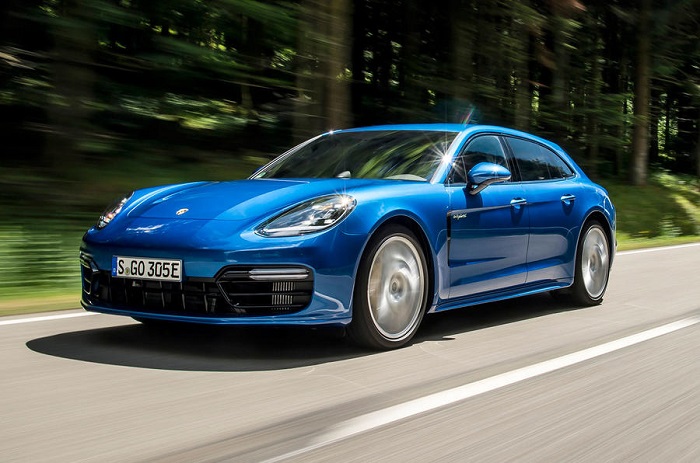
Like that Parisian concept, the test example we've borrowed for our first drive is a plug-in hybrid, though the Panamera Sport Turismo will, with the exception of the entry-level Panamera and range-topping Turbo S E-Hybrid, be spreading its practicality gains across the full breadth of the Panamera model line-up. That means there will be everything from a turbocharged 3.0-litre 335bhp petrol V6 in the Panamera 4, through to the 534bhp 4.0-litre twin-turbo of the Panamera Turbo, with the 4S Diesel’s 4.0-litre turbodiesel with 416bhp and 627lb ft of torque somewhere in-between.
It isn’t thoughts of either that flagship Turbo or elastic 4S Diesel that are forefront in my mind now though, but how this new Panamera looks. Time softened the original Panamera’s lines, but visually it was never a car you could truly love. The second-generation Panamera changes that, the car finally confident in its skin. And this Sport Turismo version enhances that sense of self-possession further.
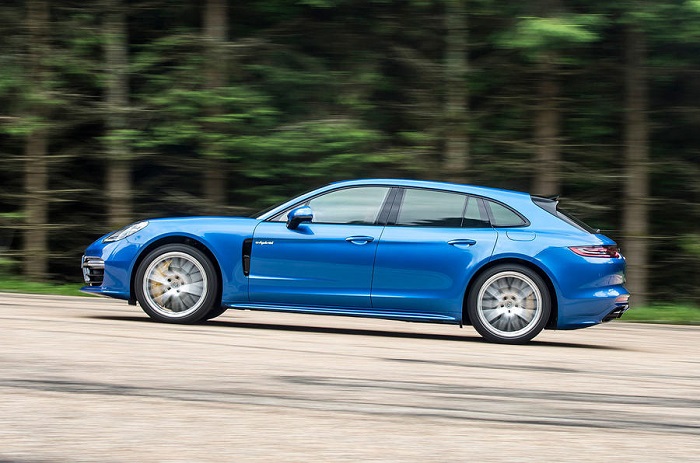
Based on the standard Panamera rather than extended 'Executive' version, the Sport Turismo's wheelbase remains at 2950mm. It looks longer, that lengthier roofline and more upright D-pillar deceiving the eye. Still just over five metres - 5049mm if you must know, the width also unchanged at 1,937mm, too. Height increases, though by a mere 5mm, to 1428mm, though the roof’s extension further back rather than that slight increase in height is what characterises the increased space, or at least perception of it, in the rear seats.
Sit back there and the difference is clear. The roofline continuation behind your head, where in the regular Panamera it would otherwise plunge downwards, creates a more comfortable impression of space in the rear passenger compartment. Headroom’s improved for the two outside passengers, with the car's new middle ‘seat’ - a first in a Panamera - is more of an apologetic high perch between those two properly accommodated passengers. That '+1' passenger had better be short and narrow too, the wide transmission tunnel also denying much comfort for any fifth person careless enough not to call shotgun on a proper pew. By describing it as a 4+1 seating ‘concept’ Porsche is admitting that seat is abstract, even if there’s a three-pointed seatbelt back there to support it.
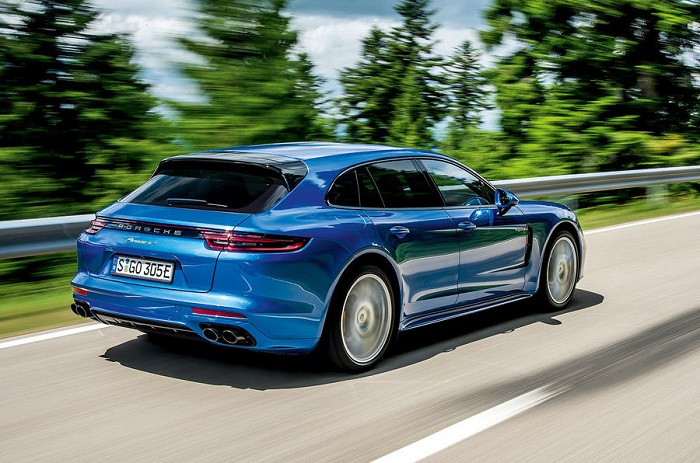
Don’t think, either, that the Panamera Sport Turismo's going to swallow a Chesterfield. A Chippendale perhaps, but a loin-clothed mahogany-tanned one rather than a wardrobe. Yes, the seats fold in a 40/20/40 split, the seatbacks unlocked electrically in the boot. Do that and they create a virtually flat floor. Again, it’s deceptive, looking bigger, but load space in all is up by just 20-litres, which is a small overnight bag at best.
Now a maximum of 520 litres seats up, or 1,390 litres folded, though the hybrid here loses some 95 litres over its non-battery assisted relations for just 425/1,295 litres. Someway short of a Cayenne’s 618/1,728 litres capacity, by way of comparison. Throw in the sizeable bag with all the charging cables and the boot’s smaller again, that a complaint that’s peculiar to this plug-in model alone, though.
Practicalities then, aren’t necessarily the Panamera Sport Turismo’s strongest point, even if Porsche offers it with a variable loading system including boot rails with lashing points, a luggage net and optional power socket. The larger hatchback is electrically operated as standard in all, its opening giving better, lower access to that marginally increased space. If ultimate luggage carrying is what you’re after then you’ll be better served elsewhere.
Think shooting brake then, a more, dreadful as its sounds, ‘lifestyle’ spin on the Panamera. Or simply just think of it as a more alluring Panamera shape. Its form arguably works more convincingly with contrasting standard dark, rather than the optional Sport Design body-coloured elements that are fixed to the sides, front and rear here. Leave it standard and the rear looks less buxom and the flanks slimmer. As with its conventional hatchback relation you’ll need the optional 20-inch wheels, or even better the 21-inch ones to fill those wheelarches convincingly.
What is impressive is all that extra Sport Turismo bodywork only sees weight rise by 20kg. In this, the heaviest of the Panamera Sport Turismos that means a not insubstantial unladen DIN weight of 2,190kg (unladen weight EC - 2,265kg). You only need to have to have put some cells in a Tamiya RC car as a kid to understand where the extra 275kg over the non-hybrid Panamera 4S comes from.
We’ve driven this powertrain before, and there are elements of it that genuinely impress. Glide off using E-Power mode on batteries and 134bhp electric motor alone and it’s quick and quiet, perfect for town driving. Thanks to an 87mph electricity alone top speed and respectable range it doesn’t feel confined by the city, either. The 31 miles of promised range is unlikely in all but perfect conditions, but use E-Hybrid mode and it’ll only fire up the 2.9-litre V6 petrol when it’s absolutely necessary.
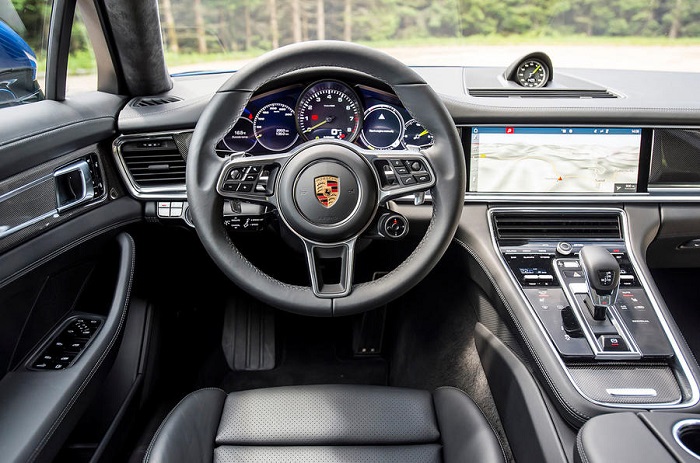
There is, of course, the opportunity to pick and choose the energy management, the options including E-Hold if you’re inner-city, low-emissions zone-bound to conserve the battery’s charge. The drivetrain also allows you to push charge to the battery on the move, but do that and you could run a Turbo flat-chat down the autobahn and achieve similar consumption.
With all, there are some compromises then, not least in accessing them. Some elements of the hybrid drive require sub-menu navigation to find, not all being available on the mode switch dial on the steering wheel. Usefully, the Porsche Communication Management’s combined touch screen and haptic touch interface on the centre console is all fairly self-explanatory, if prone to the odd messy fingerprint.
What is clear here is that Porsche has been working on how the various hybrid elements interact. Driven initially on the original launch there were moments when the 4 E-Hybrid’s internal combustion and battery power mating seemed conflicted. In the Sport Turismo here, that’s far less obvious, the transition between E-Mode to Auto-Hybrid and back, and everything in between, a bit more resolved, if not entirely seamless.
There’s still the odd hiccup through the eight-speed PDK transmission, a low speed knock that upsets the Panamera’s otherwise fine refinement. The accelerator pedal feel is transformed, the odd, unnatural push back from the pedal of the early cars not so obvious here. Porsche has clearly quietly working on the system’s integration behind the scenes. The brake pedal, too, feels more conventional, even though they remain tasked with regeneration and not quite as decisive in their initial bite as regular Panameras.
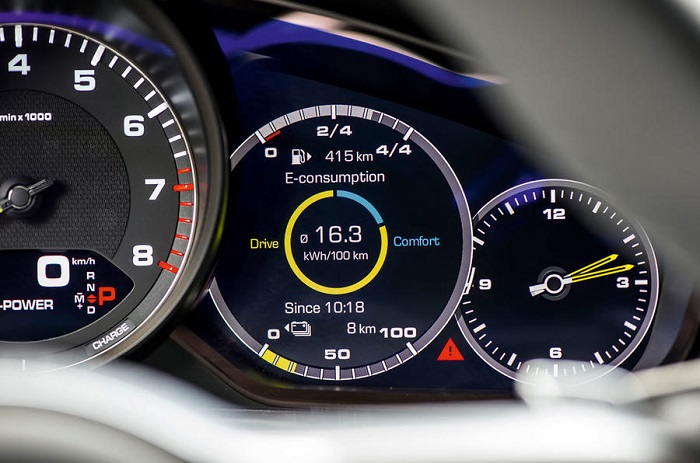
You do also pay for the 4 E-Hybrid’s drivetrain’s mode-juggling party tricks elsewhere. Undeniably the bluntest of the Panamera line-up dynamically, even Porsche’s chassis people have a job masking the additional mass the hybrid system brings. The steering isn’t rich in detail, though the standard PASM air suspension does a fine job of producing both a decent ride and fine body control. It’s all okay until you start asking more from it, where that additional mass comes into play.
Arrive quicker at corners and the 4 E-Hybrid’s mass is apparent, pushing the Panamera wide, it lacking the accuracy and agility of its conventionally powered relations. That’s a manifestation of its drivetrain rather than anything to do with the shape of its rear. Indeed, the Sport Turismo driver all but oblivious to the differing roofline, save for a slightly alternative view out the back. That and the highly improbable prospect of a third passenger in your rear-view mirror.
Price £86,869; Engine V6, 2894cc, twin-turbo, petrol, plus electric motor; Power 456bhp at 5250rpm; Torque 516lb ft at 1100rpm; 0-62mph 4.6sec; Top speed 173mph; Gearbox 8-spd dual-clutch automatic; Kerb weight 2190kg; Economy 113.0mpg (combined); CO2 56g/km, 11%
Source: Autocar

Like that Parisian concept, the test example we've borrowed for our first drive is a plug-in hybrid, though the Panamera Sport Turismo will, with the exception of the entry-level Panamera and range-topping Turbo S E-Hybrid, be spreading its practicality gains across the full breadth of the Panamera model line-up. That means there will be everything from a turbocharged 3.0-litre 335bhp petrol V6 in the Panamera 4, through to the 534bhp 4.0-litre twin-turbo of the Panamera Turbo, with the 4S Diesel’s 4.0-litre turbodiesel with 416bhp and 627lb ft of torque somewhere in-between.
It isn’t thoughts of either that flagship Turbo or elastic 4S Diesel that are forefront in my mind now though, but how this new Panamera looks. Time softened the original Panamera’s lines, but visually it was never a car you could truly love. The second-generation Panamera changes that, the car finally confident in its skin. And this Sport Turismo version enhances that sense of self-possession further.

Based on the standard Panamera rather than extended 'Executive' version, the Sport Turismo's wheelbase remains at 2950mm. It looks longer, that lengthier roofline and more upright D-pillar deceiving the eye. Still just over five metres - 5049mm if you must know, the width also unchanged at 1,937mm, too. Height increases, though by a mere 5mm, to 1428mm, though the roof’s extension further back rather than that slight increase in height is what characterises the increased space, or at least perception of it, in the rear seats.
Sit back there and the difference is clear. The roofline continuation behind your head, where in the regular Panamera it would otherwise plunge downwards, creates a more comfortable impression of space in the rear passenger compartment. Headroom’s improved for the two outside passengers, with the car's new middle ‘seat’ - a first in a Panamera - is more of an apologetic high perch between those two properly accommodated passengers. That '+1' passenger had better be short and narrow too, the wide transmission tunnel also denying much comfort for any fifth person careless enough not to call shotgun on a proper pew. By describing it as a 4+1 seating ‘concept’ Porsche is admitting that seat is abstract, even if there’s a three-pointed seatbelt back there to support it.

Don’t think, either, that the Panamera Sport Turismo's going to swallow a Chesterfield. A Chippendale perhaps, but a loin-clothed mahogany-tanned one rather than a wardrobe. Yes, the seats fold in a 40/20/40 split, the seatbacks unlocked electrically in the boot. Do that and they create a virtually flat floor. Again, it’s deceptive, looking bigger, but load space in all is up by just 20-litres, which is a small overnight bag at best.
Now a maximum of 520 litres seats up, or 1,390 litres folded, though the hybrid here loses some 95 litres over its non-battery assisted relations for just 425/1,295 litres. Someway short of a Cayenne’s 618/1,728 litres capacity, by way of comparison. Throw in the sizeable bag with all the charging cables and the boot’s smaller again, that a complaint that’s peculiar to this plug-in model alone, though.
Practicalities then, aren’t necessarily the Panamera Sport Turismo’s strongest point, even if Porsche offers it with a variable loading system including boot rails with lashing points, a luggage net and optional power socket. The larger hatchback is electrically operated as standard in all, its opening giving better, lower access to that marginally increased space. If ultimate luggage carrying is what you’re after then you’ll be better served elsewhere.
Think shooting brake then, a more, dreadful as its sounds, ‘lifestyle’ spin on the Panamera. Or simply just think of it as a more alluring Panamera shape. Its form arguably works more convincingly with contrasting standard dark, rather than the optional Sport Design body-coloured elements that are fixed to the sides, front and rear here. Leave it standard and the rear looks less buxom and the flanks slimmer. As with its conventional hatchback relation you’ll need the optional 20-inch wheels, or even better the 21-inch ones to fill those wheelarches convincingly.
What is impressive is all that extra Sport Turismo bodywork only sees weight rise by 20kg. In this, the heaviest of the Panamera Sport Turismos that means a not insubstantial unladen DIN weight of 2,190kg (unladen weight EC - 2,265kg). You only need to have to have put some cells in a Tamiya RC car as a kid to understand where the extra 275kg over the non-hybrid Panamera 4S comes from.
We’ve driven this powertrain before, and there are elements of it that genuinely impress. Glide off using E-Power mode on batteries and 134bhp electric motor alone and it’s quick and quiet, perfect for town driving. Thanks to an 87mph electricity alone top speed and respectable range it doesn’t feel confined by the city, either. The 31 miles of promised range is unlikely in all but perfect conditions, but use E-Hybrid mode and it’ll only fire up the 2.9-litre V6 petrol when it’s absolutely necessary.

There is, of course, the opportunity to pick and choose the energy management, the options including E-Hold if you’re inner-city, low-emissions zone-bound to conserve the battery’s charge. The drivetrain also allows you to push charge to the battery on the move, but do that and you could run a Turbo flat-chat down the autobahn and achieve similar consumption.
With all, there are some compromises then, not least in accessing them. Some elements of the hybrid drive require sub-menu navigation to find, not all being available on the mode switch dial on the steering wheel. Usefully, the Porsche Communication Management’s combined touch screen and haptic touch interface on the centre console is all fairly self-explanatory, if prone to the odd messy fingerprint.
What is clear here is that Porsche has been working on how the various hybrid elements interact. Driven initially on the original launch there were moments when the 4 E-Hybrid’s internal combustion and battery power mating seemed conflicted. In the Sport Turismo here, that’s far less obvious, the transition between E-Mode to Auto-Hybrid and back, and everything in between, a bit more resolved, if not entirely seamless.
There’s still the odd hiccup through the eight-speed PDK transmission, a low speed knock that upsets the Panamera’s otherwise fine refinement. The accelerator pedal feel is transformed, the odd, unnatural push back from the pedal of the early cars not so obvious here. Porsche has clearly quietly working on the system’s integration behind the scenes. The brake pedal, too, feels more conventional, even though they remain tasked with regeneration and not quite as decisive in their initial bite as regular Panameras.

You do also pay for the 4 E-Hybrid’s drivetrain’s mode-juggling party tricks elsewhere. Undeniably the bluntest of the Panamera line-up dynamically, even Porsche’s chassis people have a job masking the additional mass the hybrid system brings. The steering isn’t rich in detail, though the standard PASM air suspension does a fine job of producing both a decent ride and fine body control. It’s all okay until you start asking more from it, where that additional mass comes into play.
Arrive quicker at corners and the 4 E-Hybrid’s mass is apparent, pushing the Panamera wide, it lacking the accuracy and agility of its conventionally powered relations. That’s a manifestation of its drivetrain rather than anything to do with the shape of its rear. Indeed, the Sport Turismo driver all but oblivious to the differing roofline, save for a slightly alternative view out the back. That and the highly improbable prospect of a third passenger in your rear-view mirror.
Price £86,869; Engine V6, 2894cc, twin-turbo, petrol, plus electric motor; Power 456bhp at 5250rpm; Torque 516lb ft at 1100rpm; 0-62mph 4.6sec; Top speed 173mph; Gearbox 8-spd dual-clutch automatic; Kerb weight 2190kg; Economy 113.0mpg (combined); CO2 56g/km, 11%
Source: Autocar
Latest News


